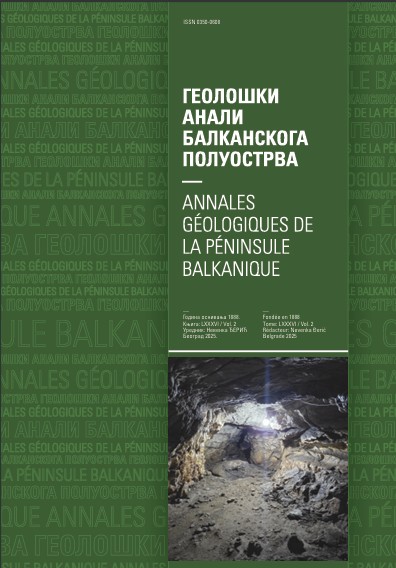From shallow-water carbonate ramp to hemipelagic deep-marine carbonate deposition: Part 1. General characteristics, microfacies and depositional history of the Middle to Late Anisian Bulog sedimentary succession in the Inner Dinarides (SW Serbia)
Abstract
The opening of the Neo-Tethys started in the Middle Anisian and is recorded in the drowning sequence of the shallow-water Ravni/Steinalm Carbonate Ramp and the subsequent deposition of deep-marine limestones, e.g., the red nodular limestones of the Bulog Group. In the Inner Dinarides of southwest Serbia the continental break-up of the Neo-Tethys Ocean is characterized by the formation of a horst-and-graben topography. The change from deposition of shallow-water carbonates formed in an epicontinental sea (graben stage of the Neo-Tethys Wilson Cycle) to red nodular deep-marine limestones (Bulog Limestone) in the late Pelsonian (Middle Anisian) is relatively abrupt due to the rapid decrease of carbonate production. The deeper-water Bulog Limestone, deposited in the early stage of the passive continental margin evolution of the western Neo-Tethys can be dated by conodonts and in rare cases also by ammonoids quite exactly, and therefore it is possible to reconstruct the Pelsonian to Illyrian sedimentological evolution precisely: 1) The late Pelsonian is characterized by the drowning of the shallow-water Ravni Carbonate Ramp and a rapid deepening of the depositional realm. Extension led to the formation of neptunian dykes in the shallow-water Ravni Formation, filled with deeper-marine red micrite, and the formation of a horst-and graben morphology. Whereas some of the horsts uplifted and emerged in the grabens near to the newly formed escarpments thick breccia successions were deposited with a fining-upward trend during the early-middle Illyrian. On top of other horsts or newly formed gentle slopes red nodular limestones were deposited. In cases layers with enriched ammonoids formed (Fossillagerstätten). 2) The early-middle Illyrian ongoing subsidence resulted in the deposition of more and more condensed red nodular limestones with hard ground formation. 3) Around the middle/late Illyrian boundary a new pulse of tectonic motions resulted in the tilting of blocks, the formation of new escarpments and again mobilization of mass transport deposits. In addition, a second generation of neptunian dykes was formed. They crosscut the late Pelsonian to middle Illyrian Bulog Limestone, the Pelsonian Ravni Formation, and the older generation of neptunian dykes in the shallow-water Ravni Formation. All formerly emerged horsts flooded and red nodular limestones were deposited on the karstified shallow-water Ravni Formation after a gap. This second pulse of tectonic motions is related to the widespread volcanism in the Dinarides as visible in the appearance of mm-sized biotite clasts in the late Illyrian Bulog Limestone. In contrast to the Outer Dinarides, where thick volcanics are intercalated in the Illyrian sedimentary succession, in the Bulog Limestone successions of the Inner Dinarides volcanics are missing. In general the Pelsonian-Illyrian sedimentary succession is characterized by a stepwise deepening of the depositional realm.
Copyright (c) 2023 Geološki anali Balkanskoga poluostrva

This work is licensed under a Creative Commons Attribution 4.0 International License.










